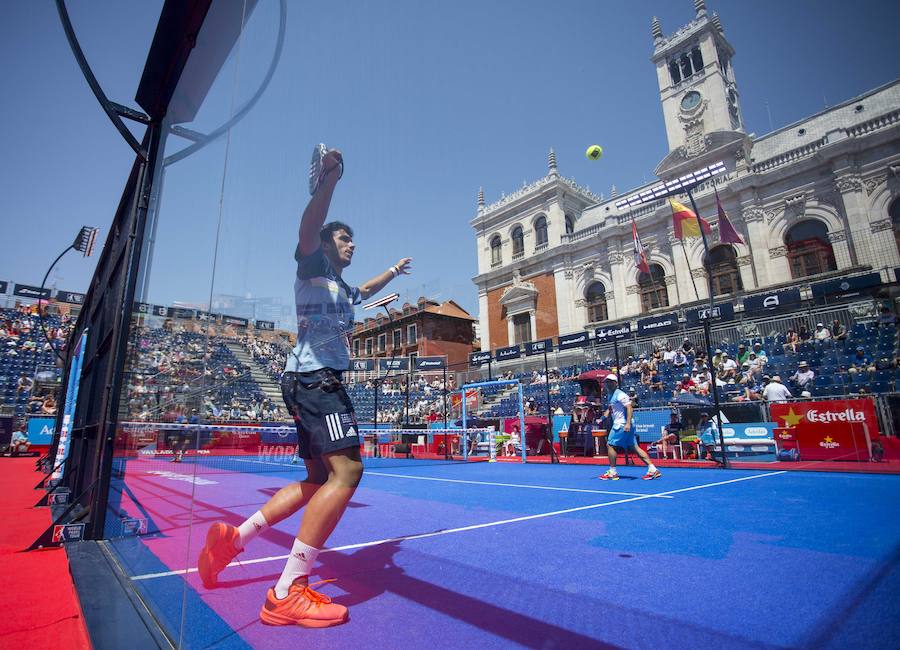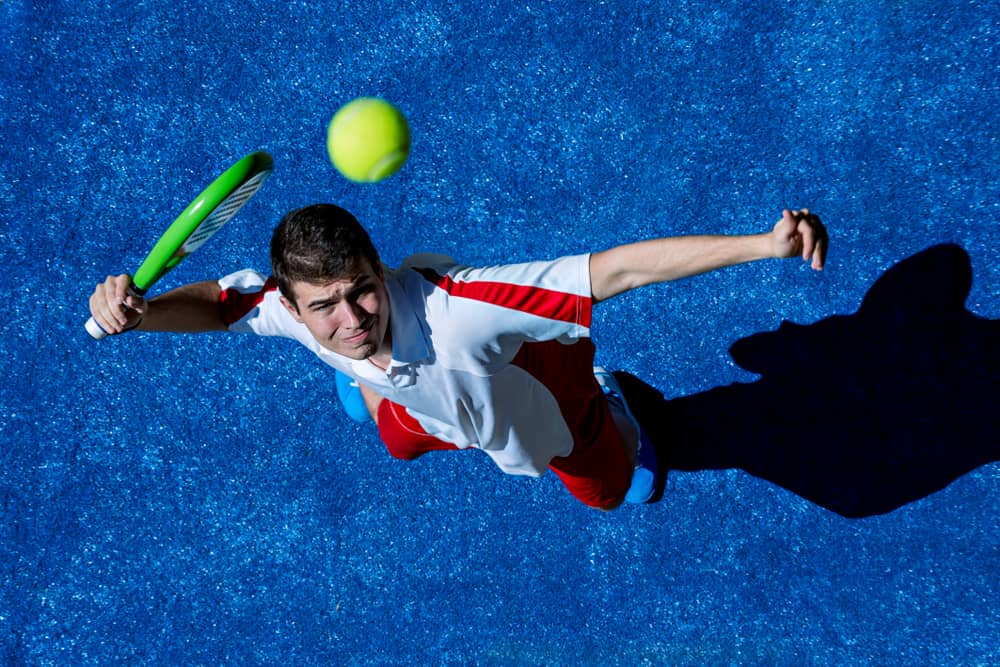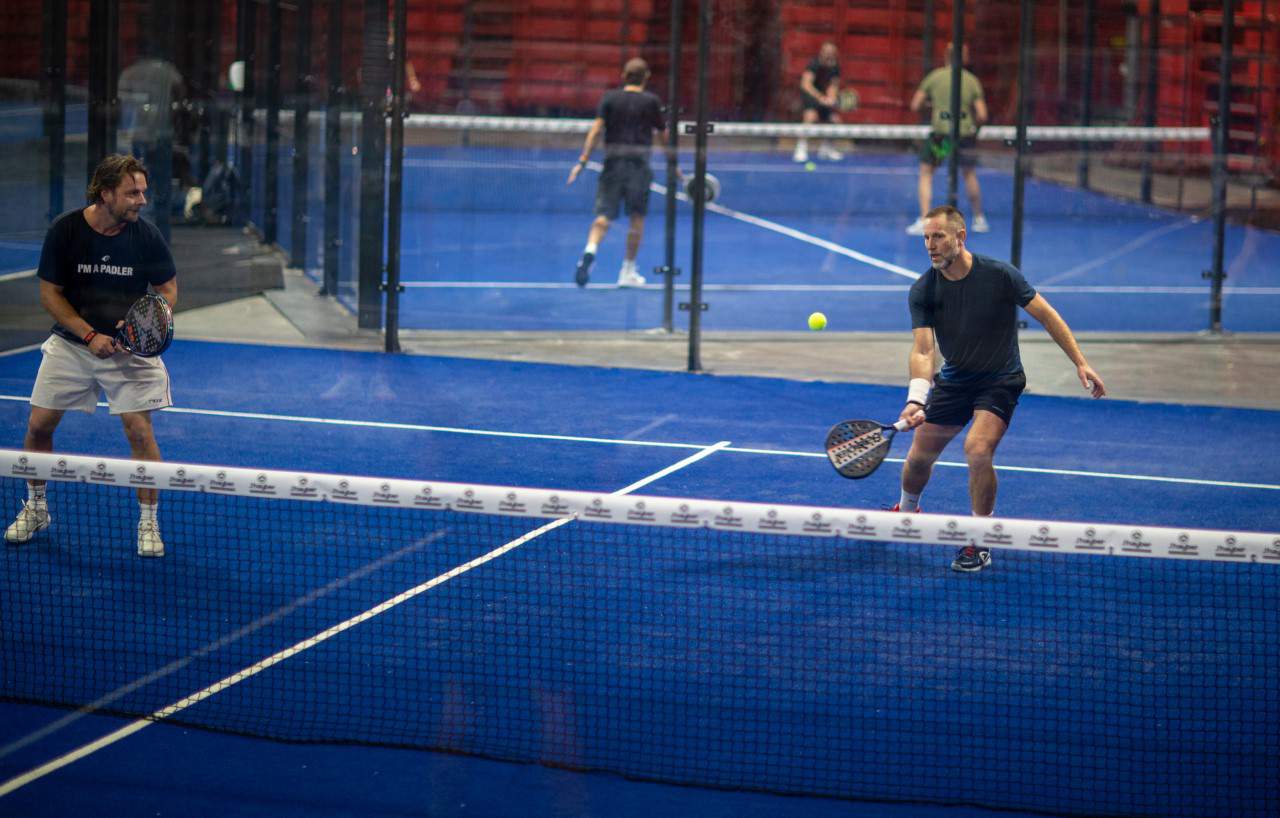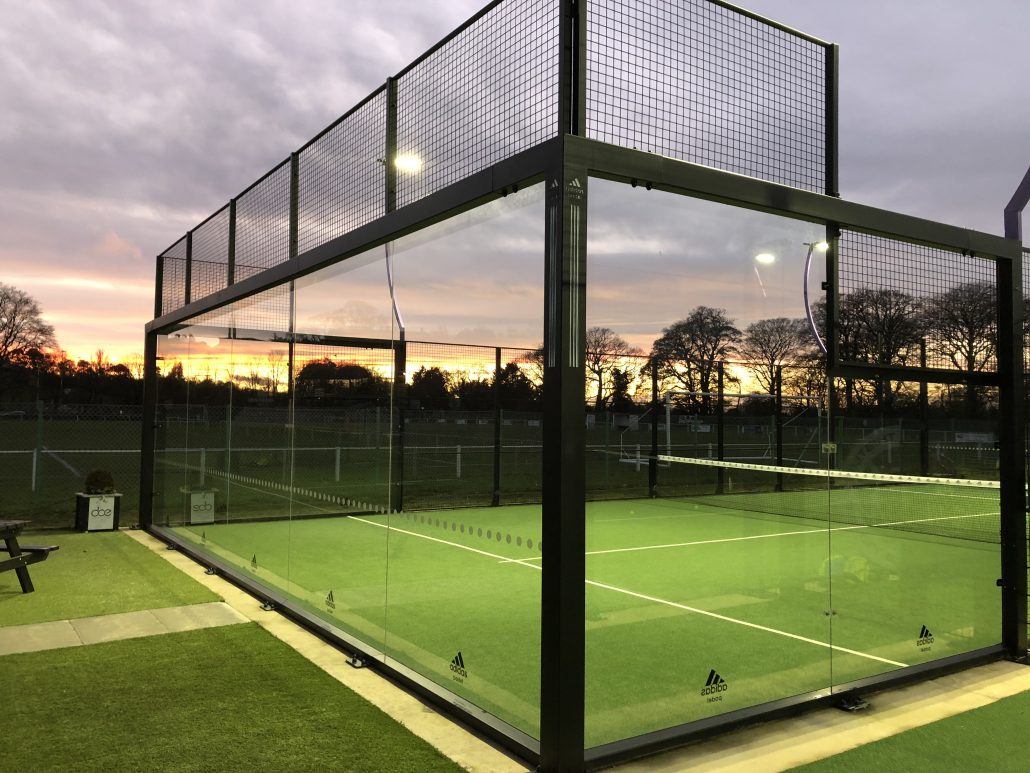There is a whole series of padel shots which, the experienced player and the novice, should at least know.
These are the ABC's of this sport, allowing you to make a difference on the field and (some of them) able to put your opponent in difficulty.
Certainly the mere fact of knowing them does not lead to knowing how to master them, but it is a start to then try them in the field.
In this article, we'll show you what we think are the foundational shots for the padel. Read them thoroughly and then try them out in your friendly matches.
What are the shots of the Padel called?
Let's begin to see one by one the names and how the shots of the padel are made, trying to explain them in the simplest possible way.
Service

Let's start with the serve, the shot that sets the match in motion and each new exchange between the players.
To perform a good service it is necessary drop the ball to the ground and hit it on the reboundi.e. as it rises.
This shot must be performed diagonally, making sure to execute this rebound in the rectangle adjacent to the opponent's net.
Once the first bounce has been made here, the ball can go for the second one everywhere except on the glassless wall.
That is, if he goes on the grid or if he doesn't enter the rectangle, it counts as a foul and will have to be repeated. Two consecutive fouls score point for the opponent. If the ball touches the net on the serve, it is called Net and the shot is repeated without counting a foul.
Right and reverse

The obverse and reverse are the two classic shots of the padel, where the first is performed by bringing the arm that grips the racket from behind the back to the point of impact with the ball.
The reverse instead, it is performed with the arm closed towards the chest, which opens to impact the ball. In both cases, the body must be turned towards the ball and not facing the net.
If you are looking for the best padel racketsyou can find them in this article.
Forehand and backhand + wall

These two shots are made when the ball is hit after a touch on the glass or the net, thus with an extra factor to create difficulties.
For the beginner they are particularly difficult, as it fails to properly calculate the extent of the rebound.
Ideally they should be performed by predicting where the ball will arrive, being in position to perform a forehand or backhand with the body perfectly balanced.
Then there is the variant generated by double bounce on the glass (lateral and bottom), even more difficult.
If you are looking for the accessories for the padel, find them here.
Volley forehand and backhand

Forehand/backhand shot that does not wait for the ball to bounce on the ground, but play fast to put the opponent in crisis.
Attention, it seems easy, but you need to have your feet firmly planted on the ground otherwise the ball will end up in another hemisphere.
Do you want a padel clothing for your matches? We have the article for you.
Crushed

When the ball is high, a good slap with the racket that crushes it to the ground with force is an irresistible temptation.
Be careful though, this is not tennis and the smash is not as effective for scoring. The back wall will make the ball come back and, if you haven't chosen the right moment or the right angle, you need an easy return for the opponent.
It makes you smile to see the astonishment of the novices who hit the ball convinced they have scored and see it come back perfect for the opponent, who didn't even have to take a step and with whom he can easily score.
Lob

When the opponent attacks the net putting the player in difficulty, then the shot to defend himself is the one aimed at vault over padel's opponent.
Particularly indicated when a rebound is collected on the back wall and the opponent is lined up to close the mirror.
The ball must be hit with the shovel slightly inclined and from bottom to top, trying to send the ball diagonally to the opposite corner.
If done right, it is impossible for the opponent to attack and is forced to defend.
You need some accessories from padel? We've rounded up the best in our guide.
Answer on the wall

A padel hit that, if done badly, could lead the player to breaking a racket or physically harming yourself.
When the opponent manages to climb over, generating a soft blow that "goes out" on the back glass, very often it is not possible to respond with a forehand or a backhand.
This is because he turned his back on the net, running in the opposite direction. To respond you can hit the ball from bottom to top with great violence, sending it to slam on the bottom glass.
If it comes out right, the ball will draw an arc and fall back into the opponent's field, saving the player. If done wrong, the racket hits the glass or the ball comes back into the player's face (at worst).
Effect shots

Lastly, padel's effect hits couldn't be missing, the juiciest ones in the whole ranking and that everyone wants to do.
Here it is about cut the ball well and generate a very high rotation of the same, such that it will change its trajectory.
This blow can be soft or powerful, in or out, long or short and so on and so forth.
To do this you always need to tilt the shovel and hit not fully, but almost making the ball run away.
Obviously the difficulty is very high. To make them easier, better equip yourself with one textured padel racket whose grainy face helps generate rotations.
Conclusions
These are all the main strokes that can be done in padel, which you absolutely must know and master.
If you learn to do them well, you will have reached the level of intermediate player and you can aim for the next step, that is the professional.
With a few hours of lessons and many games, you will see that you will be able to make all these shots without the slightest problem.